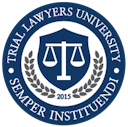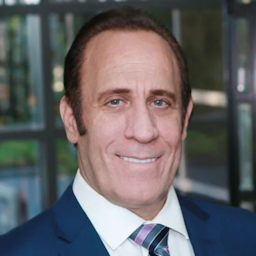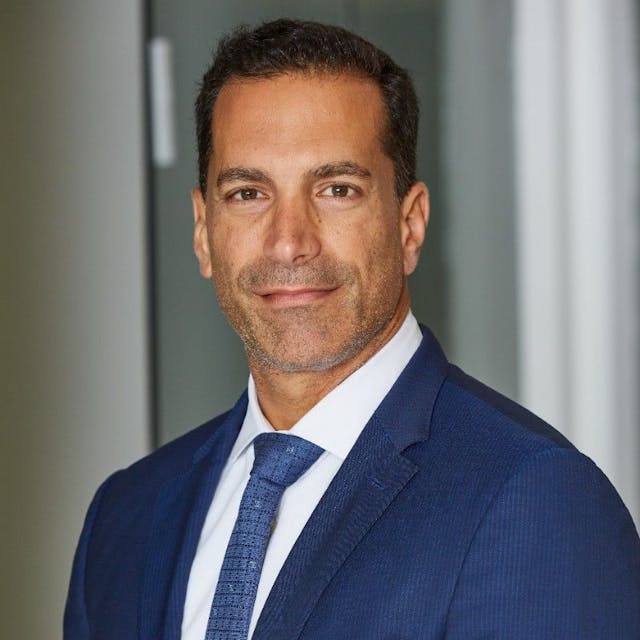Mastering TBI Cases: A Trial Lawyer’s Guide to Winning Brain Injury Litigation
Traumatic Brain Injury (TBI) cases are some of the most challenging yet rewarding cases a trial lawyer can handle. With TBIs often labeled as “invisible injuries,” insurance companies and defense teams exploit medical gaps and skepticism to minimize claims. This six-hour master class will give you the tools to identify, build, and win TBI cases with confidence. From screening potential cases and understanding complex medical evidence to overcoming common defenses and presenting compelling damages at trial, this session will elevate your ability to advocate for brain injury survivors.
Whether you're facing a mild concussion claim or a catastrophic brain injury case, you’ll gain practical strategies, expert insights, and trial-tested techniques to maximize case value and secure justice for your clients. If you want to take your TBI litigation skills to the next level and learn how to effectively counter the insurance industry’s playbook, this must-attend class is for you.
Hour 1: Identifying and Evaluating a TBI Case
Recognizing a TBI Case
- Common causes: Car accidents, falls, assaults, workplace injuries
- Mild vs. moderate/severe TBI: How they present differently
- The role of early symptom identification (headache, dizziness, cognitive fog)
Screening the Case for Merit
- Key indicators from police reports and witness statements
- Early signs that a client may have undiagnosed TBI
- Medical records: What ER doctors miss in concussion cases
Challenges in Proving TBI Cases
- The “invisible injury” problem
- Clients who appear normal but suffer life-changing deficits
- Overcoming skepticism from insurance companies and juries
Hour 2: Signing Up the Case and Initial Client Meeting
- Effective Client Intake
- Key questions to ask in the first call
- Screening for pre-existing conditions and prior head injuries
- Establishing expectations: Timeline, challenges, potential case value
Your First Client Meeting
- Identifying cognitive or emotional changes in the client
- Family and co-worker input: Their role in corroborating symptoms
- Building rapport with TBI clients—understanding their struggles
Preserving Evidence Early
- Obtaining 911 calls, body cam footage, accident reports
- Witness interviews: What to ask about post-accident behavior
- Early imaging (CT vs. MRI vs. DTI)—when to push for advanced scans
Hour 3: Following Up on Medical Treatment and Understanding TBI Medicine
Ensuring Proper Medical Treatment
- Why ER discharge doesn’t mean “no TBI”
- Neurologists, neuropsychologists, and TBI specialists
- The role of physical therapy, vision therapy, vestibular therapy
Understanding the Medicine of TBI
- Key terms to know and understand from the records
- Diffuse Axonal Injury (DAI): Why traditional MRIs often miss it
- Post-concussion syndrome and long-term effects
Medical Testing and Diagnosis
- Advanced imaging: Diffusion Tensor Imaging (DTI), functional MRI (fMRI), SPECT scans
- Neuropsychological testing: What it reveals about cognition
- Balance and vestibular assessments, etc
Hour 4: Reviewing Medical Records and Overcoming Common Defenses
What to Look for in Medical Records
- Common documentation issues in ER records
- Red flags: “No loss of consciousness,” “Normal neurological exam”
- Subtle clues: Discharge instructions, headache complaints, nausea
Demonstrative Evidence
Common Defenses in TBI Cases
- The “malingering” argument and how to counter it
- Defense neuropsychologists: Their common tactics
- Insurance company playbook: Pre-existing conditions and minor impact defenses
Overcoming the “Mild TBI” Label
- Educating the jury on why “mild” doesn’t mean insignificant
- Using family testimony to demonstrate life changes
- Functional impairment vs. imaging findings—why the absence of evidence is not evidence of absence
Hour 5: Proving Damages and Demonstrating the Client’s Daily Struggles
Building a Strong Damages Case
- Economic vs. non-economic damages in TBI claims
- Vocational experts: Proving loss of earning capacity
- Life care plans: Projecting future medical and rehabilitation costs
Demonstrating Invisible Injuries in Court
- Using expert testimony to translate symptoms into real-world limitations
- How to present a client who “looks fine” but isn’t
Before and After Witnesses
Hour 6: Finalizing the Case—Settlement vs. Trial Strategy
Negotiating with Insurance Companies
- Key leverage points in TBI settlement discussions
- Presenting medical evidence persuasively
- Mediation strategies: When to settle and when to walk away
Taking the Case to Trial
- Expert witness selection: Neurologists, neuropsychologists, life care planners
- The use of demonstrative evidence (brain scans, animations, simulations)
- Preparing the client for testimony—handling cross-examination
Jury Selection and Trial Strategy in TBI Cases
- Identifying jurors biased against invisible injuries
- Effective voir dire questions for uncovering skepticism
- Framing TBI in a way that resonates with jurors
TLU Live HB Agenda
Track 1
Breakfast
7:30am - 9:30am
Hosted by
- 9:00a

 TLU ProfessorLecture Title Soon To Be Announced
TLU ProfessorLecture Title Soon To Be Announced Coffee & Snacks
Hosted by
- 10:15a

 TLU ProfessorLecture Title Soon To Be Announced
TLU ProfessorLecture Title Soon To Be Announced Coffee & Snacks
Hosted by
- 11:30a

 TLU ProfessorLecture Title Soon To Be Announced
TLU ProfessorLecture Title Soon To Be Announced Lunch
Sponsored by
- 2:00p

 TLU ProfessorLecture Title Soon To Be Announced
TLU ProfessorLecture Title Soon To Be Announced Coffee & Snacks
Hosted by
- 3:15p

 TLU ProfessorLecture Title Soon To Be Announced
TLU ProfessorLecture Title Soon To Be Announced Coffee & Snacks
Hosted by
- 4:30p

 TLU ProfessorLecture Title Soon To Be Announced
TLU ProfessorLecture Title Soon To Be Announced
Track 2
Breakfast
7:30am - 9:30am
Hosted by
- 9:00a

 TLU ProfessorLecture Title Soon To Be Announced
TLU ProfessorLecture Title Soon To Be Announced Coffee & Snacks
Hosted by
- 10:15a

 TLU ProfessorLecture Title Soon To Be Announced
TLU ProfessorLecture Title Soon To Be Announced Coffee & Snacks
Hosted by
- 11:30a

 TLU ProfessorLecture Title Soon To Be Announced
TLU ProfessorLecture Title Soon To Be Announced Lunch
Sponsored by
- 2:00p

 TLU ProfessorLecture Title Soon To Be Announced
TLU ProfessorLecture Title Soon To Be Announced Coffee & Snacks
Hosted by
- 3:15p

 TLU ProfessorLecture Title Soon To Be Announced
TLU ProfessorLecture Title Soon To Be Announced Coffee & Snacks
Hosted by
- 4:30p

 TLU ProfessorLecture Title Soon To Be Announced
TLU ProfessorLecture Title Soon To Be Announced
Track 3
Breakfast
7:30am - 9:30am
Hosted by
- 9:00a

 TLU ProfessorLecture Title Soon To Be Announced
TLU ProfessorLecture Title Soon To Be Announced Coffee & Snacks
Hosted by
- 10:15a

 TLU ProfessorLecture Title Soon To Be Announced
TLU ProfessorLecture Title Soon To Be Announced Coffee & Snacks
Hosted by
- 11:30a

 TLU ProfessorLecture Title Soon To Be Announced
TLU ProfessorLecture Title Soon To Be Announced Lunch
Sponsored by
- 2:00p

 TLU ProfessorLecture Title Soon To Be Announced
TLU ProfessorLecture Title Soon To Be Announced Coffee & Snacks
Hosted by
- 3:15p

 TLU ProfessorLecture Title Soon To Be Announced
TLU ProfessorLecture Title Soon To Be Announced Coffee & Snacks
Hosted by
- 4:30p

 TLU ProfessorLecture Title Soon To Be Announced
TLU ProfessorLecture Title Soon To Be Announced
Track 4
Breakfast
7:30am - 9:30am
Hosted by
- 9:00a

 TLU ProfessorLecture Title Soon To Be Announced
TLU ProfessorLecture Title Soon To Be Announced Coffee & Snacks
Hosted by
- 10:15a

 TLU ProfessorLecture Title Soon To Be Announced
TLU ProfessorLecture Title Soon To Be Announced Coffee & Snacks
Hosted by
- 11:30a

 TLU ProfessorLecture Title Soon To Be Announced
TLU ProfessorLecture Title Soon To Be Announced Lunch
Sponsored by
- 2:00p

 TLU ProfessorLecture Title Soon To Be Announced
TLU ProfessorLecture Title Soon To Be Announced Coffee & Snacks
Hosted by
- 3:15p

 TLU ProfessorLecture Title Soon To Be Announced
TLU ProfessorLecture Title Soon To Be Announced Coffee & Snacks
Hosted by
- 4:30p

 TLU ProfessorLecture Title Soon To Be Announced
TLU ProfessorLecture Title Soon To Be Announced














































































































